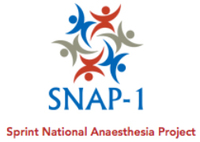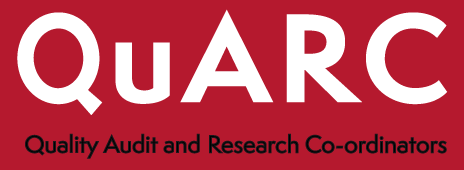SNAP-1 Archive: Project Outline

The information below gives an introduction and some background information relating to SNAP-1 and its set-up prior to the project taking place.
We are extremely grateful for your contributions to SNAP-1 and would welcome any questions, comments or feedback that you may have.
PLEASE NOTE: THE INFORMATION BELOW WAS CORRECT AT TIME OF PUBLISHING BUT MAY BE OUT OF DATE AND/OR INACCURATE.
Introduction
The Sprint National Anaesthesia Projects (SNAPs) are an exciting new initiative that will run for the first time in Spring 2014. SNAP-1 is being managed by the National Institute of Academic Anaesthesia - Health Services Research Centre (NIAA-HSRC), in conjunction with the UCL/UCLH Surgical Outcomes Research Centre (SOuRCe). It is being funded by an NIAA-administered grant provided by the Royal College of Anaesthetists (RCoA).
Background
SNAP-1 aims to provide a 'snapshot' of clinical activity in hospitals throughout the UK over a 2 day period on Tuesday 13th and Wednesday 14th May 2014. It will be a pragmatic evaluation of patient-reported outcomes after anaesthesia; specifically patient satisfaction and patient reported awareness.
The intention is that data collection at each site will be managed predominantly by anaesthetic trainees (Local Investigators LI), under the supervision of a Local Lead Investigator (LLI) who may be the Quality Audit and Research Coordinator (QuARC), the departmental audit lead, the clinical director, or another nominated representative.
Please see below presentation slides delivered by SNAP-1 Trainee Lead Dr Ellie Walker at the Research and Audit for Quality Improvement Day on 28th February 2014. You may find these useful in your local preparation for the project:
![]() Talk on SNAP-1 by Dr Ellie Walker at Research & Audit for Quality Improvement Day (1.20 MB)
Talk on SNAP-1 by Dr Ellie Walker at Research & Audit for Quality Improvement Day (1.20 MB)
An outline of the responsibilities of the LLIs is summarised in the document below:
![]() LLI summary of key tasks.pdf (611 KB)
LLI summary of key tasks.pdf (611 KB)
Ethical considerations
SNAP-1 is a research project, and as such, has undergone ethical review and received approval from the HRA/NRES Committee of the East Midlands. All correspondence with the Ethics committee can be found here:
https://niaa.org.uk/article.php?newsid=1048
We have provided the NIHR with a list of each of the sites which have registered LLIs. Following this, the R&D department at each Trust will have been notified and will begin their checks.
For Trusts in England, the single site SSI (Site Specific Information) approval process means that no local SSI form needs to be created or signed by LLIs - a single national SSI has been signed on their behalf by the Chief Investigator (Dr Ramani Moonesinghe). Thus, all that you need to do is to ensure that your local R&D department is proceeding with their local checks and cooperate with their local requirements - including providing a CV and/or evidence of recent GCP training if that is required of LLIs (see below for more information about this).
For Health Boards and Trusts in Scotland, Wales and Northern Ireland, the process is different. The NIHR in each country has been notified of all the sites who are participating in SNAP-1 and SSI forms have been completed and send to R&D for almost all Trusts/Health Boards. As with English sites, your R&D departments will want you to provide one page CVs and/or proof of GCP training - please try to comply with these requirements as quickly as possible to ensure a smooth passage through the local research approvals process.
Outcome measures
The specific outcome measures used in SNAP-1 will be the validated Patient Satisfaction Questionnaire devised by Bauer et al and the Modified Brice Questionnaire which has been adapted from protocol for the BAG-RECALL clinical trial by Avidan et al.
Questionnaires can be viewed at https://niaa.org.uk/SNAP_Documents
Objectives
This SNAP aims to establish a national benchmark for patient satisfaction after anaesthesia, which hospitals may then use to evaluate the service that they are delivering to patients and subsequently, if necessary, take action to improve quality.
Secondarily, the intention is to establish an estimate of the incidence of accidental awareness during general anaesthesia in the UK population; this concept of a "Brice day" was part of the activity that was proposed for NAP5.
Inclusion criteria
All adult (>=18 years) patients, undergoing any type of non-obstetric surgery in an operating theatre, in an NHS hospital in the UK during the study period are eligible to be included. This includes both day case and in-patient surgery as well as planned elective cases in addition to urgent or emergency operations. Endoscopic or interventional radiological procedures carried out under GA or sedation given by an anaesthetist should also be included.
Exclusion criteria
Patients <18 years old; those who are unable to understand spoken or written English; obstetric patients; patients who are too unwell or confused to be able to complete the questionnaires of those who decline to participate. Non-surgical interventions such as 'pain procedures', ECT or anaesthetic room procedures (e.g. CVC insertion, LP) are also excluded.
How will the project work in my hospital?
We anticipate that under the supervision of the LLI, LIs (who may be anaesthetic trainees, trust grades or consultants) at each hospital will be responsible for the data collection and administration of the two questionnaires to all consenting patients within 24 hours of their operation. The number of LIs required at each site will depend on the size of the hospital and the number of operations performed over the two-day period. We would suggest that participating LIs are not allocated other clinical responsibilities on the study days but this is obviously a decision that should be made locally.
Each potential participant should be provided with a patient information leaflet (see http://www.niaa-hsrc.org.uk/SNAP_Documents) on admission to hospital, prior to their surgery, so that they have time to consider the information provided. If they agree to complete and return the questionnaires, this will be taken as implied consent to participate.
The anaesthetist responsible for the care of every patient undergoing surgery on 13th and 14th May will be asked to complete a form with basic patient demographic information (e.g. age, type of surgery, type of anaesthesia) during the operation (see http://www.niaa-hsrc.org.uk/SNAP_Documents). After completion of the surgery and full recovery from anaesthesia, patients should be approached by LIs or nominated representatives to complete the two paper-based questionnaires and told that this should take no more than 10 minutes in total. Patients undergoing day-case procedures will be asked to complete the questionnaires before they are discharged home on the day of their surgery and those who remain as in-patients in hospital should be approached within 24 hours of their operation once they are on a ward. The date and time of completion of the questionnaires will be recorded on the forms themselves. If patients need help understanding the questionnaire or physically filling it in, a LI should be available to help them do so.
Each registered investigator will be provided with a login to a secure data collection webtool following close of LI registration on Friday 25th April 2014. When the paper questionnaires have been collected at each site the LLIs and/or LIs will then be required to transfer the data from each of the three questionnaires onto the data collection webtool. Each patient on the webtool will generate a unique identifier; LLI will be asked to keep a log of the unique identifiers linked to local hospital identification numbers No patient identifiable data is to be transferred outside the local hospital environment either electronically or on paper.
The log should be held locally until five years after study closure at which point it should be destroyed confidentially.
The data collection webtool will be closed for data entry on Friday 13th June 2014. After this time, the anonymised responses from hospitals across the UK will be analysed by a team of researchers based at the UCL/UCLH Surgical Outcomes Research Centre in London.
Analysis of Bauer patient satisfaction questionnaires
Cases will be analysed according to the type of surgery and anaesthetic so as to provide an overall picture of the levels of satisfaction after specific procedures and following different types of anaesthesia. Results will be reported at national level but LLIs will also be able to access a spreadsheet of their own department's data.
Analysis of Brice questionnaires
These questions will be analysed so as to determine the incidence of suspected awareness under anaesthesia nationally. If cases that may describe accidental awareness under general anaesthesia are identified by the researchers, they will refer these reports to an expert panel of assessors (consultant anaesthetists and lay representatives who have been members of the project board of NAP5). If at this stage there is still concern that the patient may have experienced awareness, then the LLIs will be contacted and asked to refer to the locally held log in order to identify the patient. LLIs will then be responsible for contacting the patient and following up this potential case of awareness according to their own departmental guidelines.







